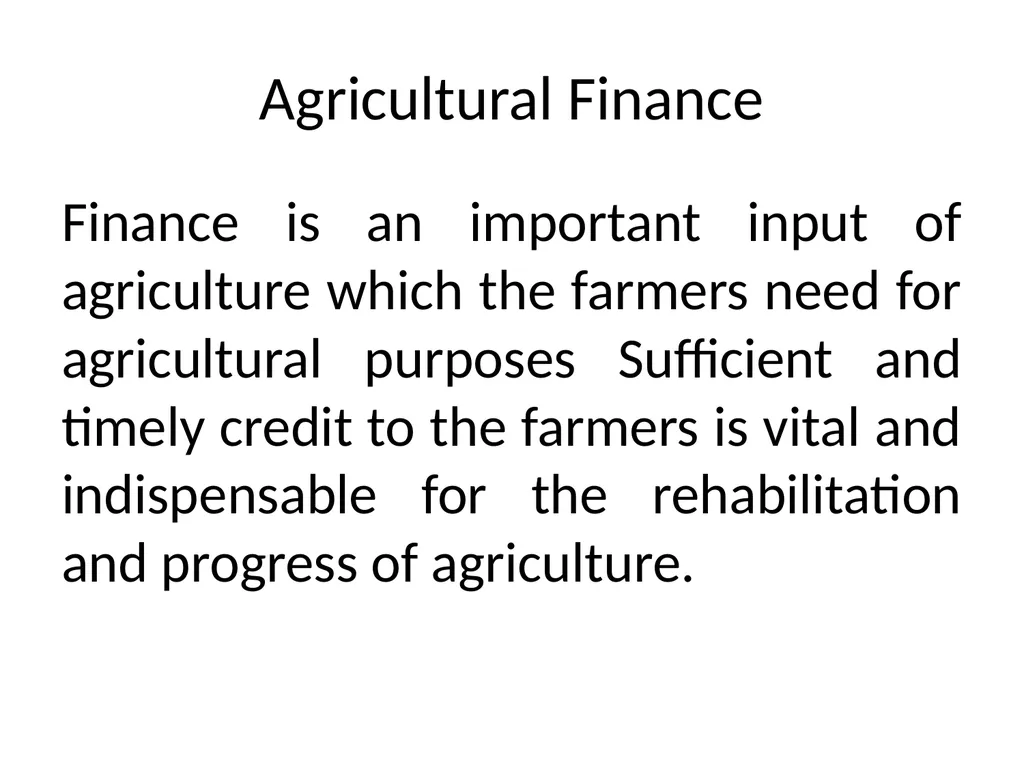Agricultural Finance Finance is an important input
Author : cheryl-pisano | Published Date : 2025-05-17
Description: Agricultural Finance Finance is an important input of agriculture which the farmers need for agricultural purposes Sufficient and timely credit to the farmers is vital and indispensable for the rehabilitation and progress of agriculture
Presentation Embed Code
Download Presentation
Download
Presentation The PPT/PDF document
"Agricultural Finance Finance is an important input" is the property of its rightful owner.
Permission is granted to download and print the materials on this website for personal, non-commercial use only,
and to display it on your personal computer provided you do not modify the materials and that you retain all
copyright notices contained in the materials. By downloading content from our website, you accept the terms of
this agreement.
Transcript:Agricultural Finance Finance is an important input:
Agricultural Finance Finance is an important input of agriculture which the farmers need for agricultural purposes Sufficient and timely credit to the farmers is vital and indispensable for the rehabilitation and progress of agriculture. Need for finance 1. Purchase of new inputs 2. Purchase of implements 3. Better management of risk 4. Permanent improvement in land 5. Better marketing of crops 6. Facing crises Classification of Agricultural Finance Agricultural credit has been classified into three categories based on the periods for which the loan is given. Theses are 1. short-term credit (crop loan) - for 15 months period and is meant for meeting the needs like seed, fertilizer, labour, cattle feed, etc. The farmer can repay the loan after harvest of the crop. 2. Medium-term credit. The period for medium term loan is from 15 months to five years. These loans are provided for meeting the expenses on land improvements, digging of wells, purchase of implements and machinery, farm animals, etc. The period for repayment is kept upto 5 years. 3.The long term credit - is for longer period than 5 years. This type of credit is given for activities requiring heavy investment. The Land Development Banks provide only the long term finance; while the Regional Rural Banks give loans only to the weaker sections like small and marginal farmers, agricultural labourers, village artisans, etc On the Basis of Purpose, Agricultural credit needs of the farmers can be classified on the basis of purpose into the following categories: (i) Productive: (ii) Consumption needs and; (iii) Unproductive. Sources of Agricultural Finance Sources can be divided into two categories: (i) Non-institutional sources. (ii) Institutional sources (i) Non-Institutional sources are the following: (a) Moneylenders (b) Relatives (c) Traders (d) Commission agents (e) Landlords Merits Easy to obtain Simple procedures ( 3. Easy access 4. No restrictions Demerits Exorbitant rate of interest Indebtness Loss of land and property Malpractices 5. Exploitation 6. Bonded labour ii) Institutional sources: (a) Cooperatives (b) Scheduled Commercial Banks (c) Regional Rural Banks (RRBs) Co operatives – 1. Provide rural credit at a lower cost 2. Provide short-term and long term loan through credit societies via land-development banks Structure of cooperatives Short and Medium term credits State Co-op Banks (at state level) (ii) Central co-op Banks (at district level) ( (iii) Primary Agricultural Cooperative Societies (PACSs) at village level 2. Long term credit State Land Development Banks (at State level)














